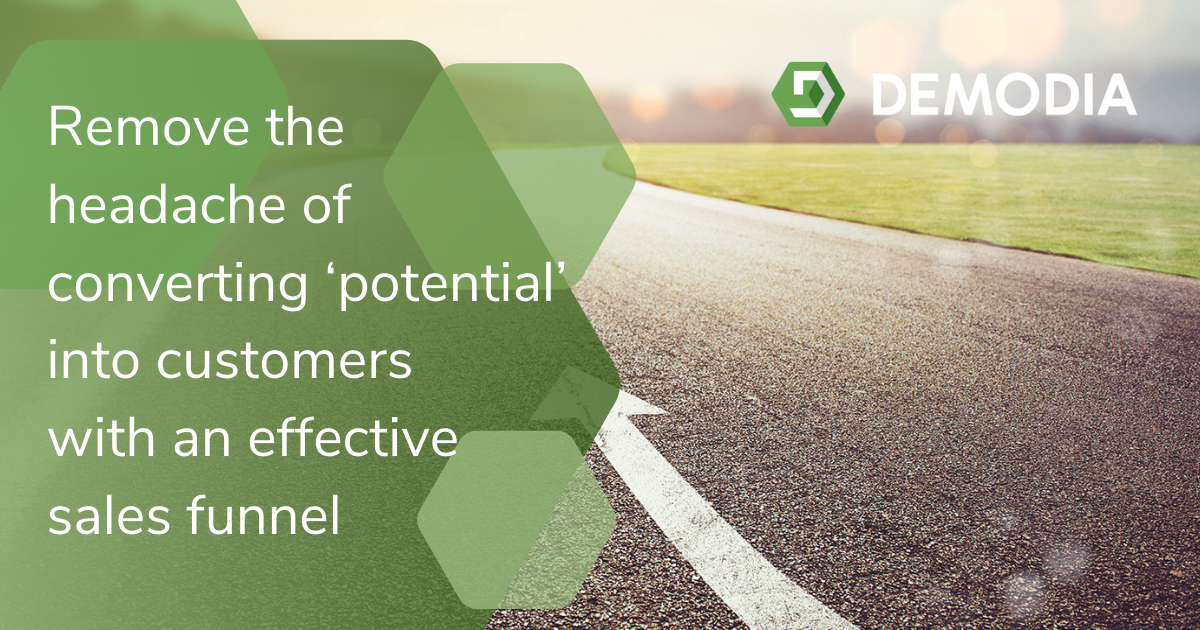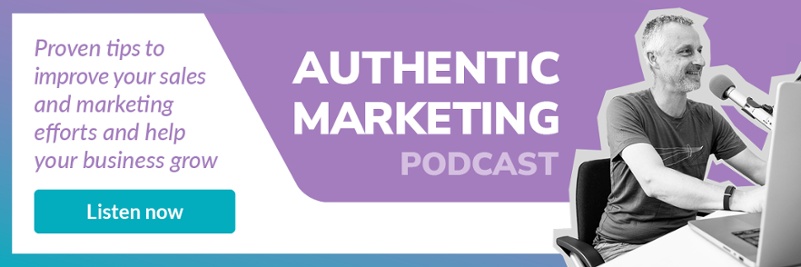How to create an effective sales funnel for your business

One of the biggest headaches for any marketing department in a company is converting ‘potential’ into customers. This is often down to not communicating effectively or following the StoryBrand journey. According to Donald Miller, best-selling author of Building a StoryBrand, the biggest problem is often not with the product or service offered, but rather with the way in which it is communicated. According to Miller, people are drawn to the products and services they understand the fastest.
When you confuse, you lose! Think about most websites designed by graphic artists and designers; content writing is often an afterthought. They may look pretty, but they're bad at communicating a clear, compelling message that makes customers listen. As Miller says, “The fact is, pretty websites don't sell things. Words sell things."
How does a sales funnel help?
According to a report by HubSpot around 61% of the marketers say generating leads and traffic is their biggest sales funnel challenge. Marketers are frustrated that their prospects simply don't understand their value through their messaging. An effective sales funnel strategy can help convert potential into customers, ensuring that marketing efforts have provided Return on Investment (RoI).
Before we delve into ‘How’ to create of an effective sales funnel, let's look at some facts as to ‘Why’:
In a study by Marketing Sherpa, the relationship-building experiences that help turn prospects into buyers uncovered some pretty powerful statistics supporting the best practices in funnel optimisation:
Nurtured leads make 47% larger purchases than non-nurtured prospects
68% of study participants have not identified their Sales and Marketing funnel
61% send all leads directly to Sales; however, only 27% of those leads will be qualified
79% have not established lead scoring
65% have not established lead nurturing
(Source: ©2011 MarketingSherpa B2B Marketing Benchmark Survey; Methodology: Fielded June 2011, N=1,745)
How to use A.I.D.A to create an effective sales funnel
Knowing how to create and iterate on a sales funnel is one of the most profitable concepts a business can master. The best ones are as seamless as they are invisible - customer experiences an intuitive and satisfying journey that meets their needs and aligns with their values, resolving a ‘problem’ and culminating in a purchase.
Of course, there's a science and strategy to leading the customer towards taking action and turning a consumer into a customer requires a logical series of steps.
The sales funnel stages are traditionally split into four parts, an approach attributed to the American advertising and sales pioneer, E. St. Elmo Lewis:
Awareness
Alternatively referred to as "attention," the first stage of the sales funnel is where a brand catches the eye of new audience members via advertising content and/or marketing promotion.
Interest
Here, the brand will begin to forge a relationship with their prospects, becoming more actively involved in learning about their aspirations and/or problems. As a business, you can begin providing preliminary solutions, allowing the prospective customers to get a taste of your brand, and become more engaged.
Desire
Consumers – future customers - who reach this third stage have become convinced that they do, in fact, have a larger problem that needs solving. Moreover, they're coming around to the idea of making a purchase to solve said problem. At this point, you want to demonstrate how your product or service can be of service.
Action
The final stage of the sales funnel has prospects deciding whether to purchase the brand's premium product or service. As a business, you'll need to reinforce the value of your offer and the downsides of not making a purchase.
 These sales funnel stages describe the general process all of us go through.
These sales funnel stages describe the general process all of us go through.
First, in a simplified scenario: a consumer in your target market sees your ad and becomes a prospect. Then, they land on your website and become a lead. Next, they realise that the product will bring them value and benefit them in some way. Finally, they make a purchase and become a customer.
Through the eyes of the customer
One of the golden rules of delivering on customer experience is empathy. If you look at it from the customer's perspective—from the moment of awareness up until the moment of buying decision—they're not travelling through a sales funnel, and they're not on a customer journey: they're simply shopping.
Rather than thinking about each stage in the sales funnel, prospective customers are experiencing each stage.
Your job is to make each stage of the sales funnel as simple and painless as for your prospects, to motivate them to keep moving through the funnel to the point of decision.
How to build a sales funnel
One of the most frustrating challenges of growing a brand is struggling to connect with those who may need your product or service. As we mentioned earlier, the problem hindering sales is often not what you're selling but what you're saying. A sales funnel creates a watertight journey from start to finish, ensuring your target customer understands your value proposition at every stage.
As Miller says, "in every lone of copy we write, we're either serving the customer's journey or descending into confusion; we're either making music or making noise".
There are many ways to create a sales funnel, and you'll need to tailor your strategy to your product/service and target customer by following the StoryBrand strategy.
That said, these steps will serve as a guide to creating a sales funnel for your business:
 1. Create a landing page
1. Create a landing page
The landing page is often the first opportunity for a prospect to learn about your business and its products and services.
Before capturing their contact information, it should clearly describe your company and the unique benefits of your product or service clearly and compellingly. This is where creating and following a StoryBrand script holds enormous value - it ensures you and your customer are speaking the same language
 2. Offer value
2. Offer value
In the age where personal data is at a premium, you must give them something in return for their email address. For example, you might offer a free e-book or whitepaper with useful and informative content.
 3. Nurture the prospect
3. Nurture the prospect
Now that the prospect has shown enough interest to provide their email address, nurture the prospect with content that educates them about your product or service and remains relevant. You'll want to stay in touch with them regularly but not so frequently that they become offended.
 4. Close the deal
4. Close the deal
Make your best offer – one that is difficult for the prospect to ignore or refuse – to close the deal. For example, you could provide a product demonstration, a free trial, or a personalised discount code.
 5. Keep the relationship going
5. Keep the relationship going
At this point in the sales funnel, the prospect has either become a customer or decided not to make the purchase. In either case, you should continue the communication and relationship-building process.
 6. Optimise your sales funnel
6. Optimise your sales funnel
You should continually look for ways to improve and optimise your website and sales funnel and determine where you are losing prospects. Focus on the areas where prospects move from one stage of the sales funnel to the next. For example, with the landing page: your offer and CTA should mirror the content (e.g., blog post, Facebook ad) that brought the prospect to your landing page.
Begin at the top of the funnel. Evaluate how well each piece of content is doing. Are you capturing enough prospects with your initial content?
Track your customer retention rates. Determine how often customers return to purchase your products or services. Do customers come back more than once, and are they buying other products or services?
Lastly, before being brain fried by strategy, stages, and processes, remember the human element, which reminds us that a lot of sales funnelling is common sense:
Elmo Lewis, who coined the A.I.D.A process articulated three principles to which an advertisement should confirm:
“The mission of an advertisement is to attract a reader so that he will look at the advertisement and start to read it; then to interest him, so that he will continue to read it; then to convince him, so that when he has read it, he will believe it. If an advertisement contains these three qualities of success, it is a successful advertisement”.
It hardly needs repeating, but customers who don't feel valued, cared for, nurtured, or understood, will continue to shop around until they find a business that does. It’s human nature, and businesses will always be working with humans.
Sales funnels are a critical part of any company and can make or break your business in terms of revenue. You may have a great product or service, but if you don't know how to market it properly, build demand for your offer, and convert your email list or audience to paying customers, then all of the marketing efforts in the world won't help.
Find the right partner
Achieving high close-rates without heavy discounting begins with a clear and concise message. Without clarity, you risk losing leads and money. We know this because we’ve been there - so many of our clients were saying too much about too little, because it’s difficult to be clear. For the past 12 years, Demodia has refined marketing to generate more revenue for our clients, and we can do it for you too.
Contact us now for a consultation. We will provide you a step-by-step approach to improve your brand story, so you can watch your conversion-rates and profits increase as customers uncover your true value.
